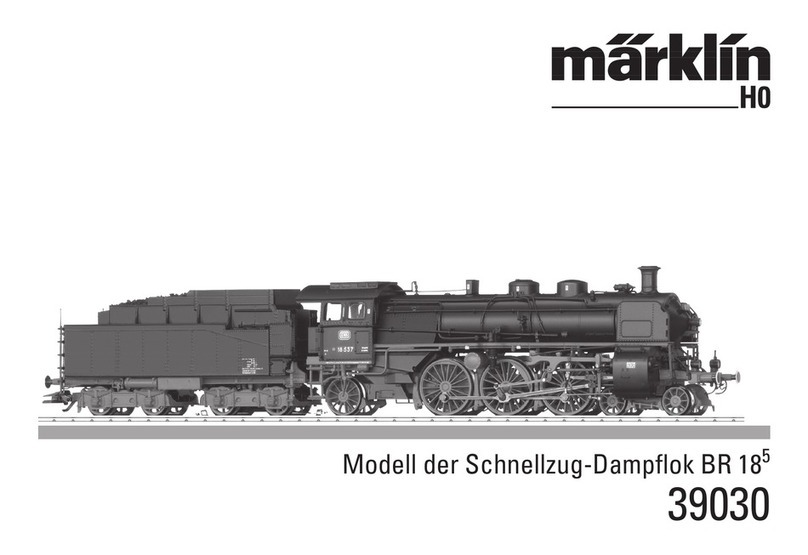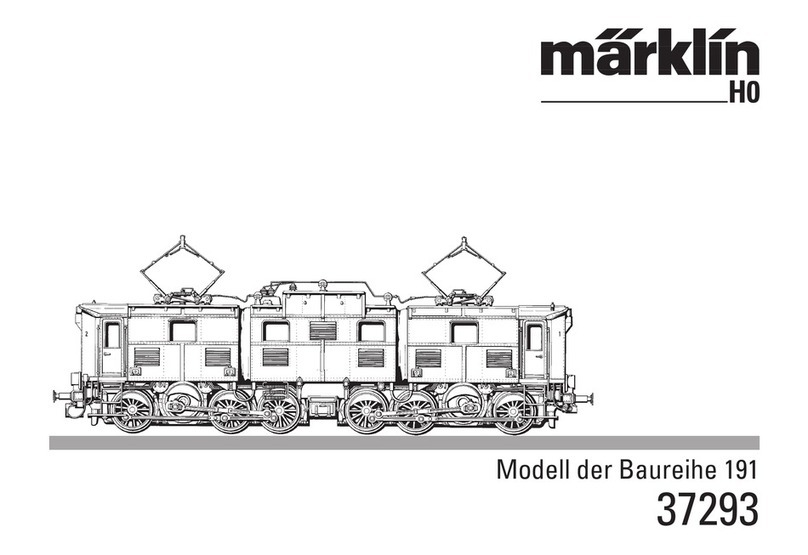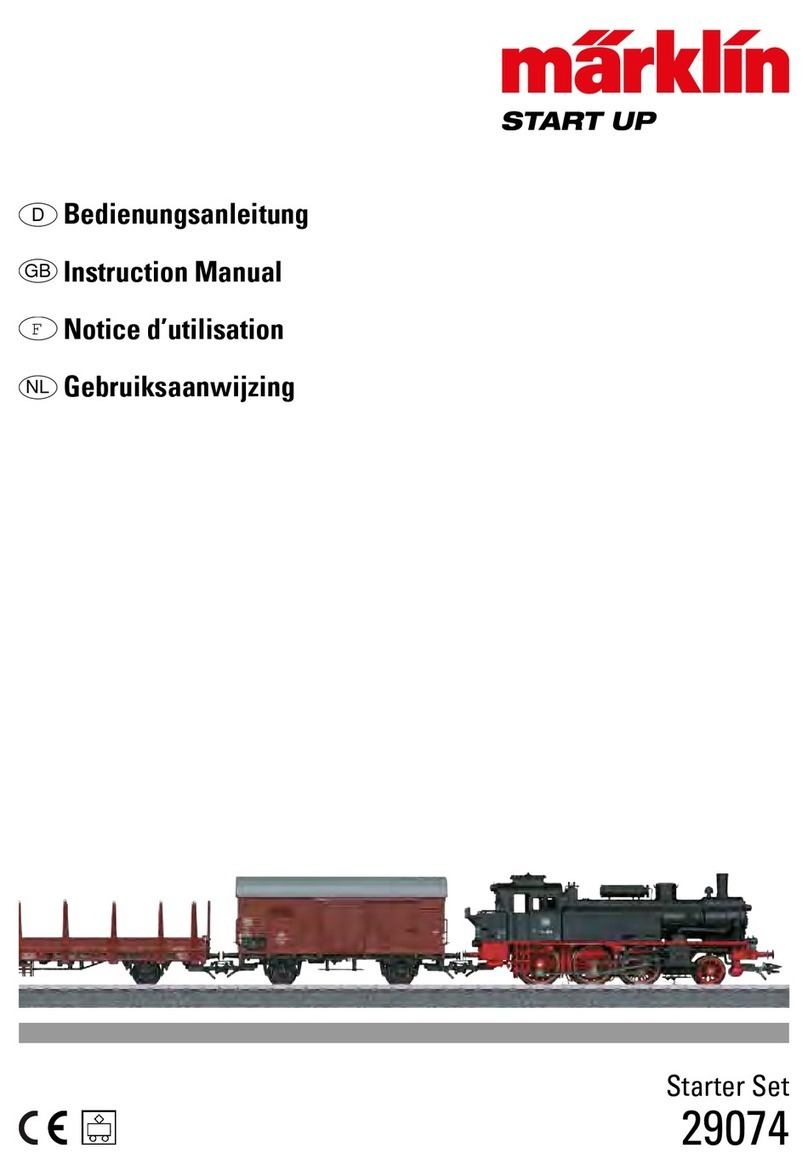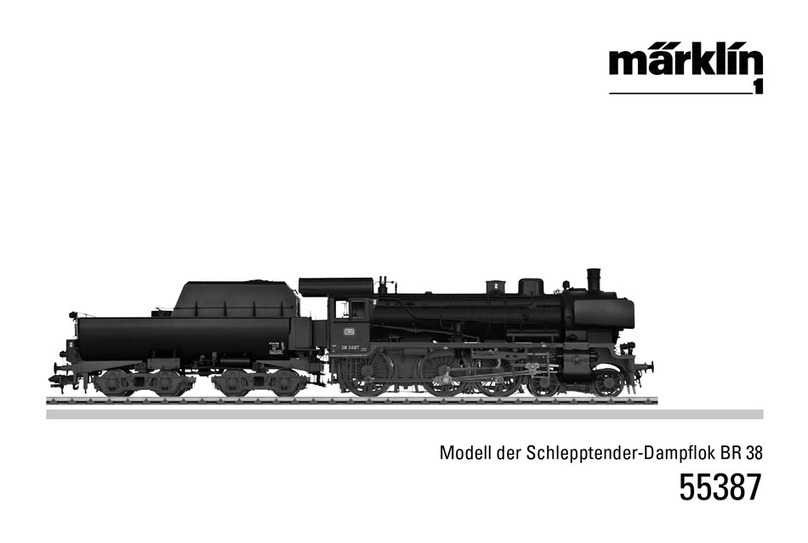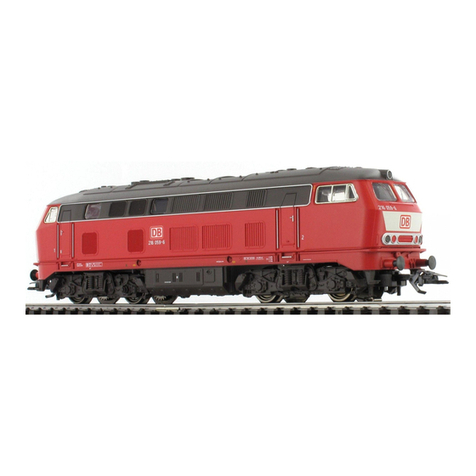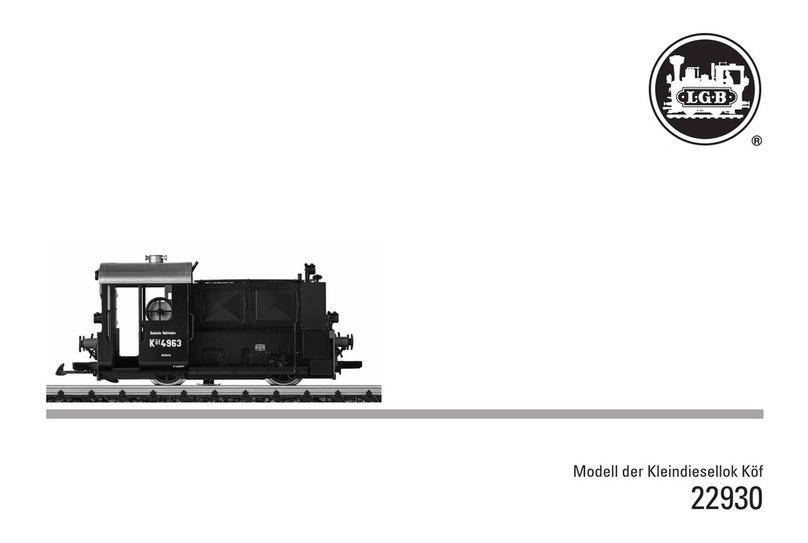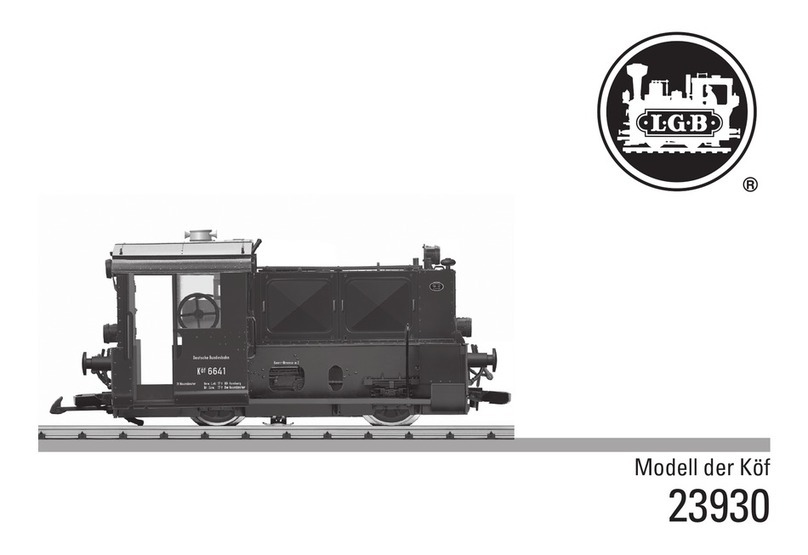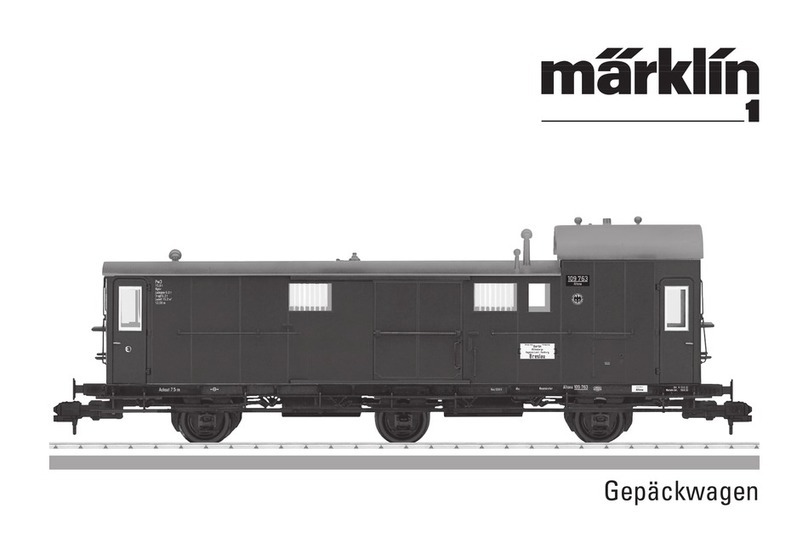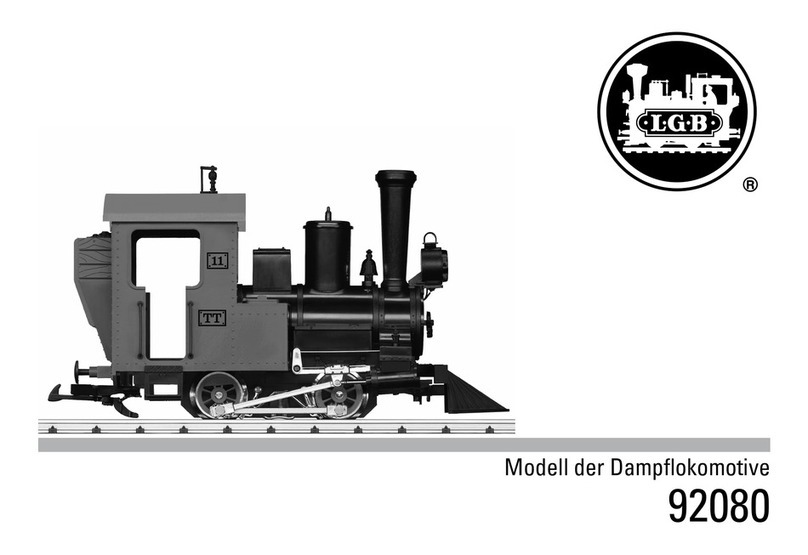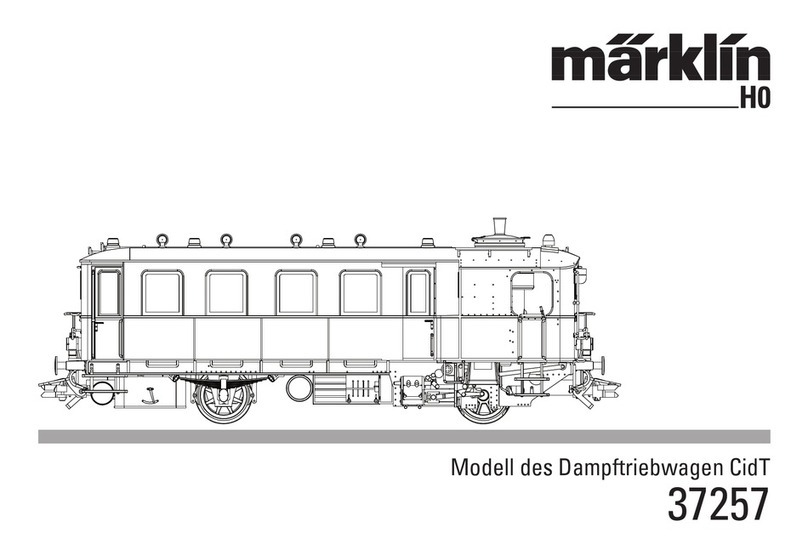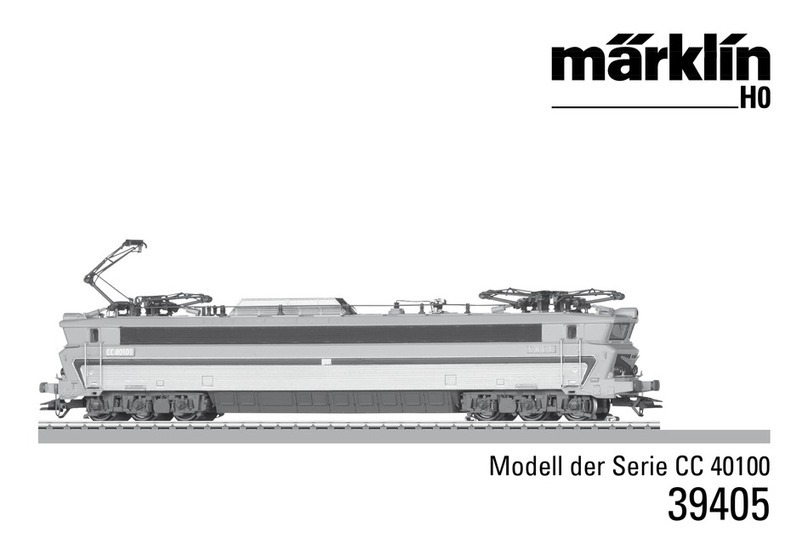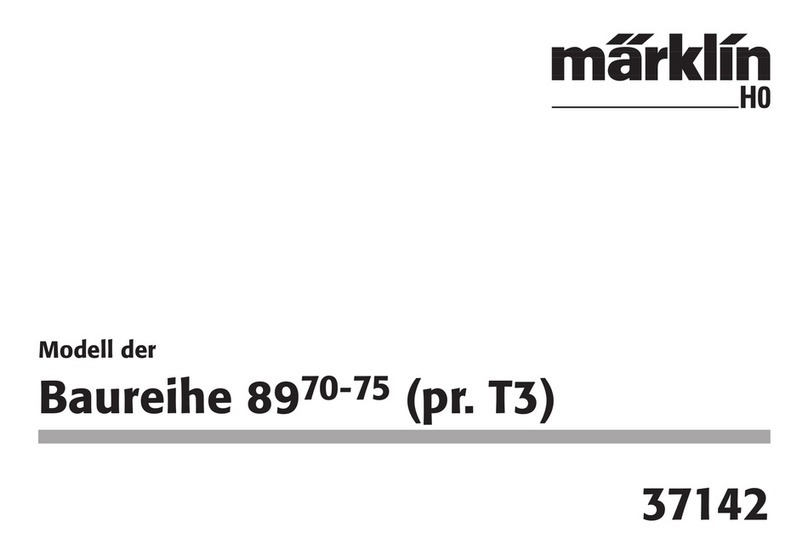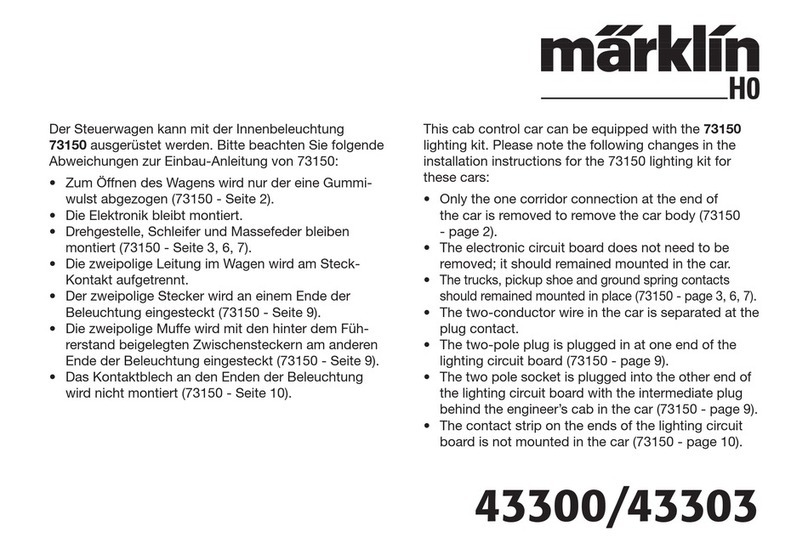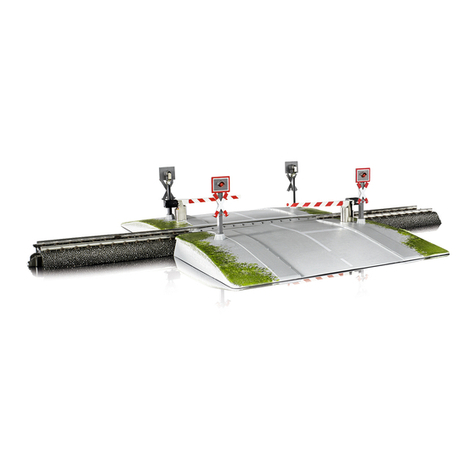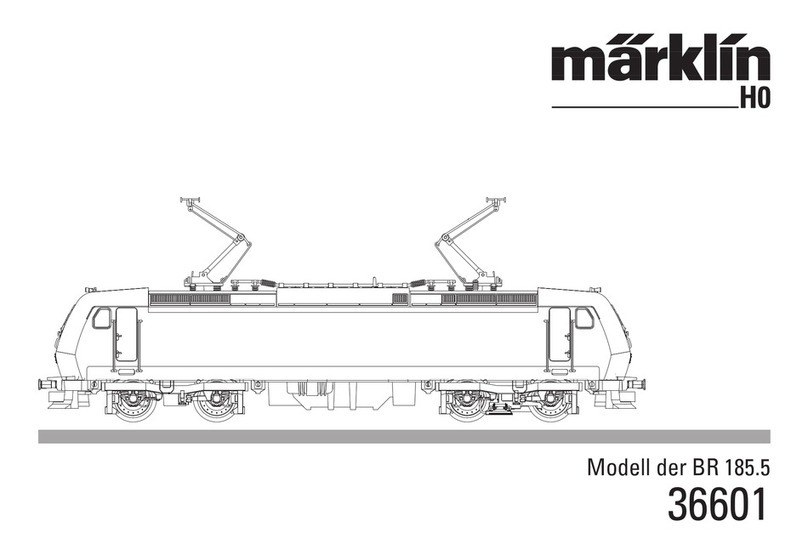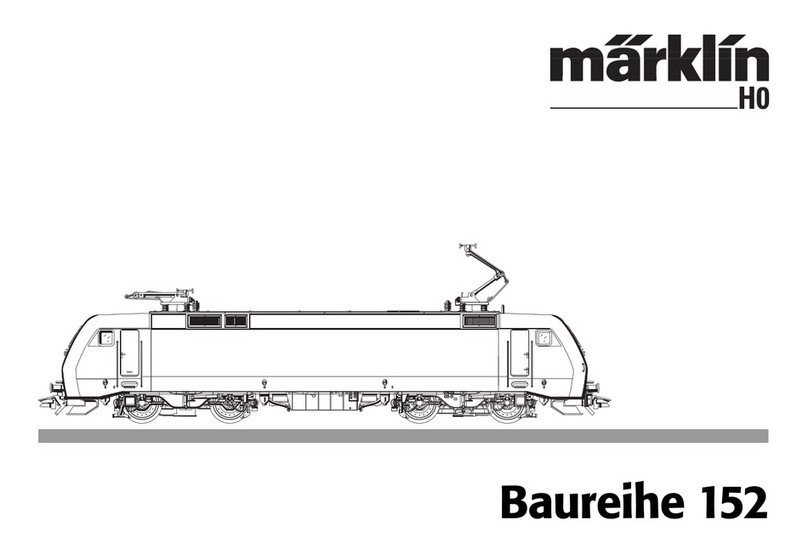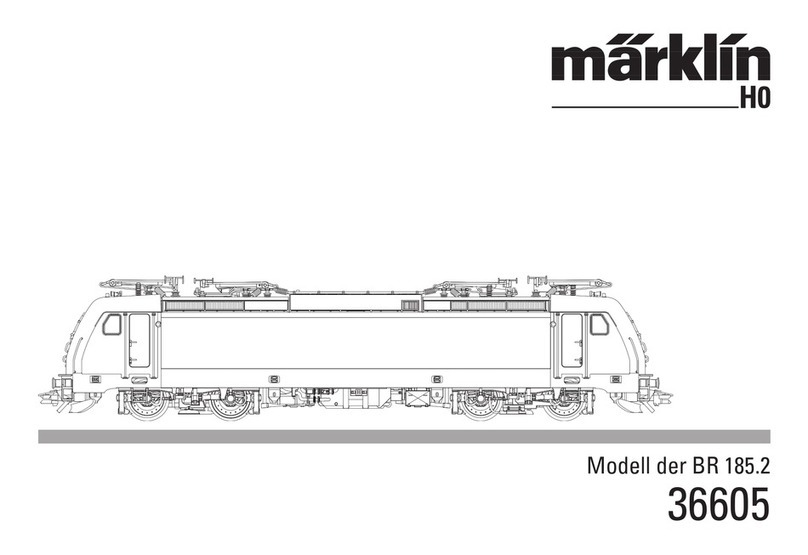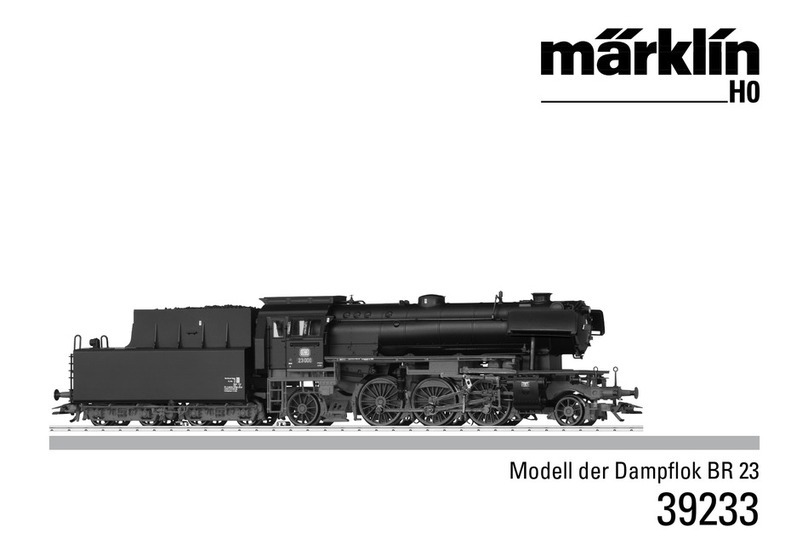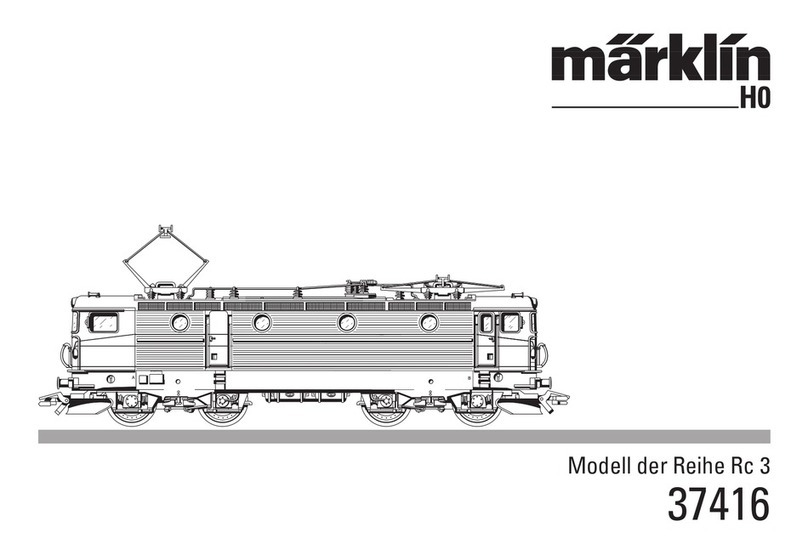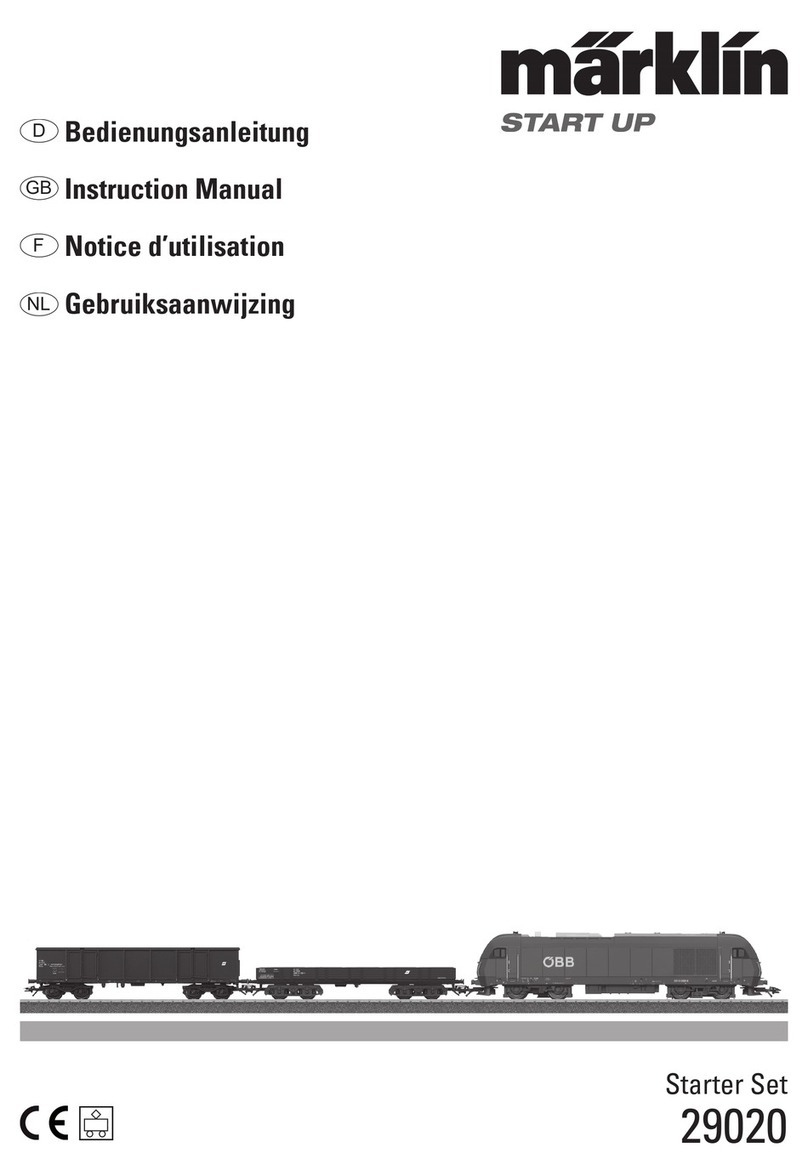7
Betrieb der Dampfmaschine
1. Vorwort
Lesen Sie vor der ersten Inbetriebnahme die nachfolgende Ge-
brauchsanleitung sorgfältig durch. Machen Sie sich mit den einzelnen
Bedienungsschritten vertraut. Üben Sie vor der ersten Inbetrieb-
nahme die notwendigen Schritte zum Betrieb der Dampfmaschine
ohne Brennstoff. Beachten Sie immer die Sicherheitshinweise auf
dem beiliegenden Hinweisblatt!
Dampfmaschinen sind eines der bekanntesten Produkte aus der fast
150-jährigen Geschichte des Hauses Märklin. Immer wieder haben in der
Vergangenheit Liebhaber dieser Antriebstechnik sich eine Neuauflage
dieser technischen Meisterwerke gewünscht. Nach einigen Jahrzehnten
„Produktionspause“ hat sich Märklin daher entschieden, eine der beliebte-
sten Versionen mit der Dampfmaschine Art.-Nr. 16051 wieder aufzulegen.
Das Modell wurde weitestgehend nach der früheren Version gestaltet.
Nur die aktuellen Sicherheitsvorschriften sind für die wenigen Änderungen
verantwortlich.
Beim Betrieb dieser Dampfmaschine ist es unvermeidbar, dass es zu
Verfärbungen, Oberflächenveränderungen und Ablagerungen an den ver-
schiedensten Stellen kommt. Diese Veränderungen sind irreversibel. Diese
Veränderungen stellen keinen Sachmangel dar und sind daher auch nicht
Bestandteil der Herstellergarantie. Um einen einwandfreien optischen Ein-
druck zu gewährleisten ist daher der Verzicht auf einen Betrieb mit Wasser
und Feuer notwendig.
2. Inbetriebnahme
Voraussetzung:
●Dampfmaschinen benötigen prinzipbedingt sehr viel Sauerstoff. Daher
ist nur ein Betrieb außerhalb geschlossener Räume möglich. Die Dampf-
maschine sollte jedoch keinem Niederschlag ausgesetzt sein.
●Verwenden Sie nur eine nicht brennbare und stabile Oberfläche um die
Dampfmaschine darauf zu betreiben.
●Stellen Sie sich geeignete Hilfsmittel (Feuerlöscher, Eimer mit Wasser,
Feuerlöschdecke) für den Notfall bereit.
●Benutzen Sie immer geeignete Schutzkleidung (Schutzbrille, Schutz-
handschuhe, schwer entflammbare Kleidung).
●Dampfmaschine ist komplett abgekühlt.
Benötigte Teile zur Inbetriebnahme
●Dampfmaschine 16051.
●Wassergemisch aus 95 % destilliertem Wasser und 5 % Leitungswasser.
●Brennspiritus.
●Sicherheitsausrüstung bestehend aus Schutzbrille, Schutzhandschuhen,
nicht oder zumindest schwer entflammbare Kleidung, Feuerlöscher,
Eimer (min. 10 l) mit kaltem Leitungswasser, Feuerlöschdecke.
●Heißdampföl und Schmieröl 7149.
